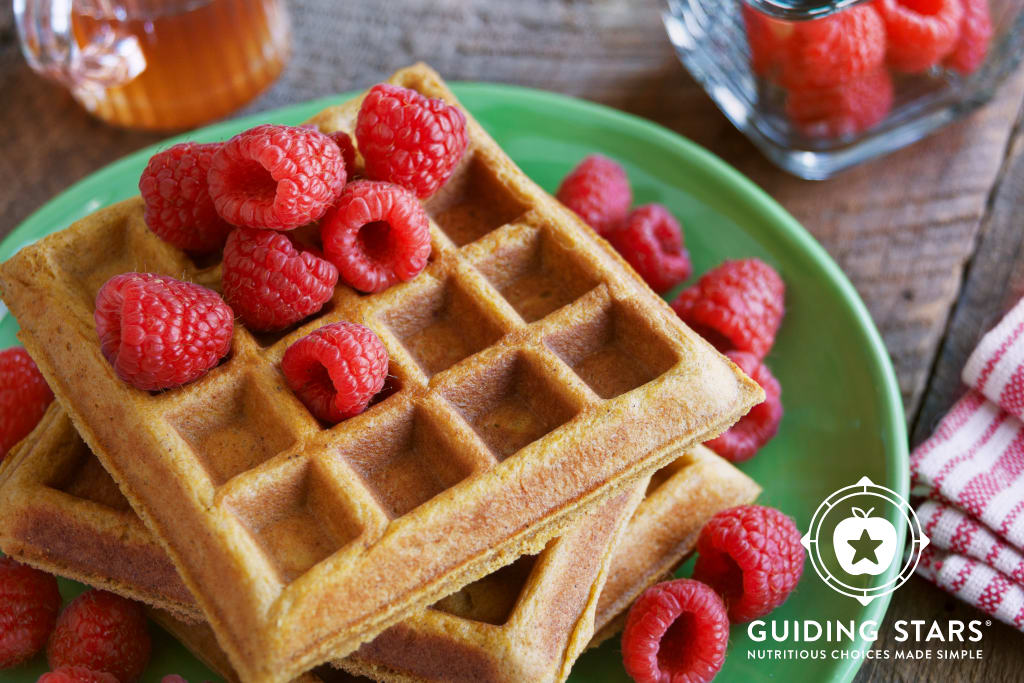I’m not known to be much of a fan of leftovers (my husband doesn’t mind taking them to work the next day for lunch, so I’m usually off the hook). However, I don’t like wasting food, so many times I will “refashion” leftovers into something that seems more like a new dish than just a reheat-and-eat situation. Even though I am pretty diligent about making quick use of leftovers that are hanging out in my fridge, sometimes something gets pushed to the back and when I finally find it, it’s a little “iffy” food safety-wise. That leads me to the first rule of leftover food safety: when in doubt, throw it out.
So, whether you are a big “meal prep” fan, like to “batch cook” certain items each week, or just aim to use up leftovers instead of wasting them, here are a few tips to help you keep your food safe to eat.
Pumpkin Overnight Waffles
Nothing makes better (and easy to reheat safely!) leftovers than homemade waffles.
View recipe »Get the USDA FoodKeeper app.
The free FoodKeeper app from the U.S. Department of Agriculture is easy to use and gives lots of info about how long various foods can be stored/frozen and proper cooking temperatures for food safety. Additional Q&As, general info, recall info, and educational videos are available via this app as well.
Follow the 2 hour time window rule.
Don’t leave leftover dishes (cooked food) out longer than 2 hours after cooking. That goes for leftover pizza, too (refrigerate it)! Bacteria in food multiplies rapidly at room temperatures. If you’re bringing home leftovers from a restaurant, make sure you get it home and in the fridge within 2 hours; if you can’t do that, don’t bring it home.
Chill out quickly.
When you’ve made a big batch of food—such as a big pot of chili or a bunch of pulled pork for your weekly meal, for example—it’s important to get the food’s temp down to refrigerator temperature (40ºF or below) fast to prevent bacterial growth. You don’t want to put the whole pot into the fridge because it will take way too long to cool down. Instead, divide that big batch of food into smaller portions and put it into multiple shallow containers or even freezer bags, and then put the containers into the refrigerator immediately. Yes, it’s perfectly fine to put it right in the fridge—you don’t need to let it cool down on the counter first (in fact, for safety’s sake, it’s better if you don’t do that).
Thaw it right.
Whether you need to thaw ingredients, or you want to thaw out something you’ve already cooked and frozen for later use, it’s important to thaw food safely. I know it seems like it should be okay to leave food on the counter all day to thaw, but it is not safe—and neither is thawing food in hot water. Both methods may allow food (or the outer layer of the food) to hover in the “danger zone” (40-140ºF) where bacteria multiply quickly. By the way, keep in mind that you can cook frozen food without thawing it—it will just take longer. However, if you need to thaw food for a recipe or just prefer to cook from a thawed state, choose one of these three safe methods:
- Thaw in the refrigerator: This is the safest way, but takes the longest. Store the thawed food in the refrigerator and use within 4 days.
- Thaw in a cold water bath: Put the food in a leak-proof package or bag, then submerge it in cold tap water, changing the water every 30 minutes. A pound of meat may thaw in about an hour, a 3-4 pound package of frozen food may take 2-3 hours, and for frozen turkey, estimate 30 minutes per pound.
- Thaw in the microwave: When you thaw in the microwave, you should plan to cook it right afterward (by whatever method you choose), as the process can sometimes heat portions to cooking temps or “danger zone” temps.
Avoid repeat reheats.
Take what you want from your big ol’ pot of leftover soup and just reheat that amount—not the whole thing—easy, right? Same goes for lasagna, taco meat, etc. The more trips that food takes through the danger zone due to being heated and cooled repeatedly, the more chances bacteria have to multiply to dangerous levels.
If you’re looking for a few recipes to utilize leftovers, check out this recipe that uses leftover pasta, or this one that uses leftover cabbage, or this one that uses leftover baked potatoes. And if you want to have some awesome leftovers, check out this recipe for Slow Cooker Greek Chicken, Pumpkin Overnight Waffles, or One Pot Ratatouille. For more ideas, search the GuidingStars.com recipe database for “leftovers.”
